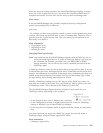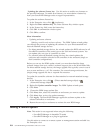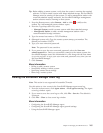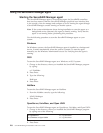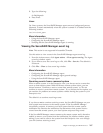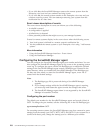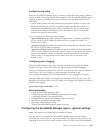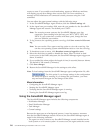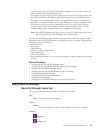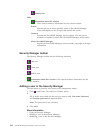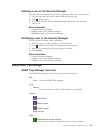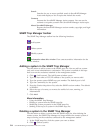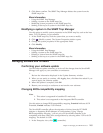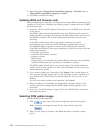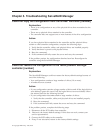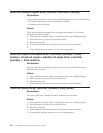
to each remote system. Use the Notification Manager from the agent console to
add systems to the agent destination list.
v The agent can notify users by email when events occur on the local system. Use
the Email Notification Manager to add recipients to the email notification list.
v The agent can run maintenance tasks on a regular basis, such as a logical drive
migration or synchronization. Use the Task Manager to manage scheduled tasks.
v The agent can log events to the operating system event log, sound an alarm
when an event occurs, and broadcast critical or fatal events to users. Use the
General settings from the agent console to configure these settings.
Note:
ServeRAID Manager also logs events to a log file. Each component of the
agent (except for the Task Manager) has its own log file.
The
ServeRAID Manager agent monitors and generates events for critical or fatal
problems in the ServeRAID Manager configuration every 5 seconds. These changes
include, but are not limited to:
v defunct drives
v PFA drives
v Failed battery
v Offline or critical logical drives
v Failed controllers
v Enclosure problems
v Non-warranted drives. An event is sent at startup, console connection, and every
30 days
More information
v Configuring the ServeRAID Manager agent
v Configuring the ServeRAID Manager agent general settings
v Starting the ServeRAID Manager agent
v Verifying that the ServeRAID Manager agent is running
v Using the Notification Manager
v Using the Email Notification Manager
v Using the Task Manager
v Viewing the ServeRAID Manager agent event log (action)
Using Security Manager
Security Manager menu bar
The Security Manager menu bar has the following functions:
File →
Close Closes the Security Manager.
View →
Toolbar
Turns the toolbar on and off. The default is on (that is, selected).
Actions →
Add user
Delete user
Chapter 4. Managing ServeRAID devices 211



